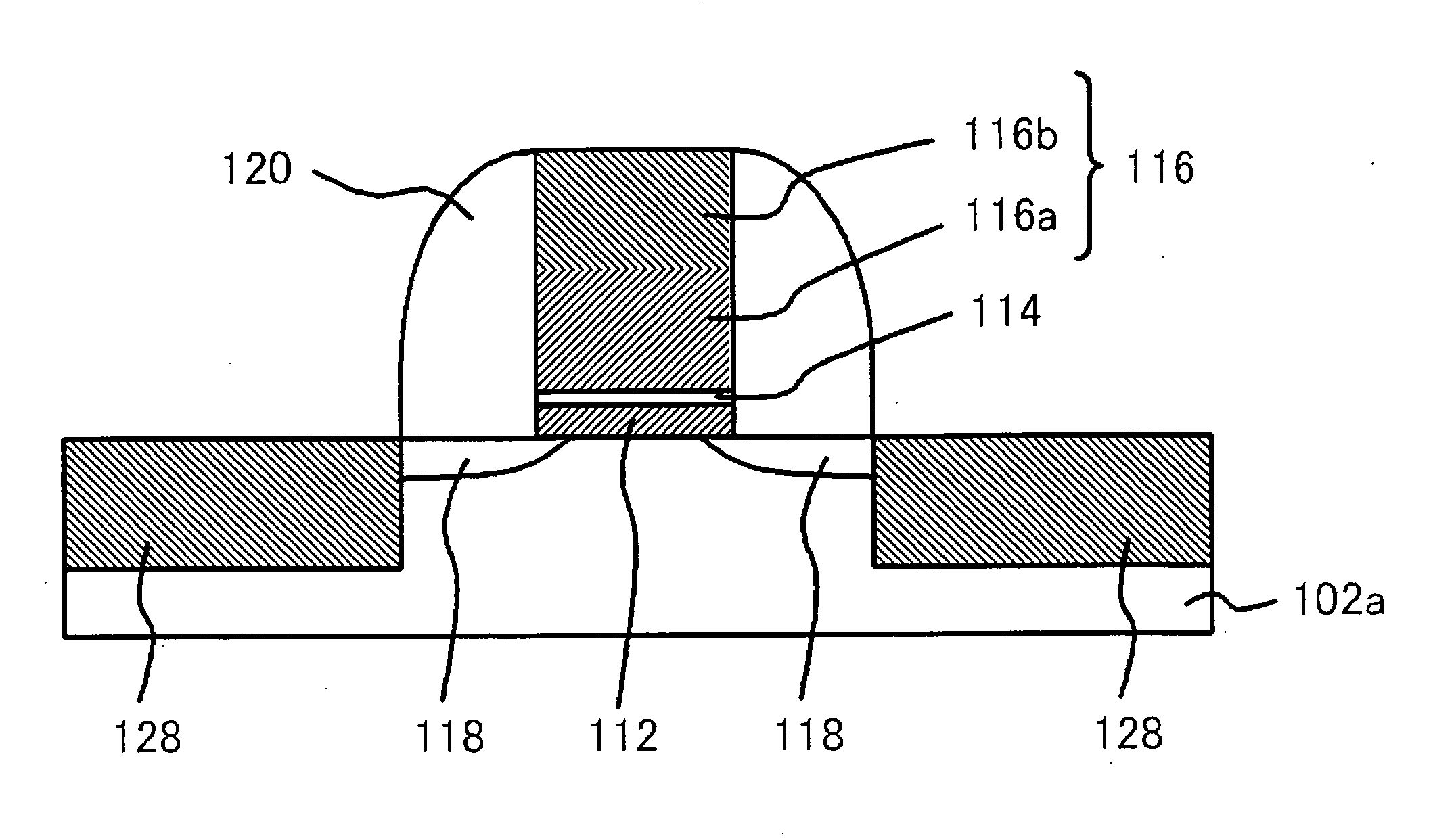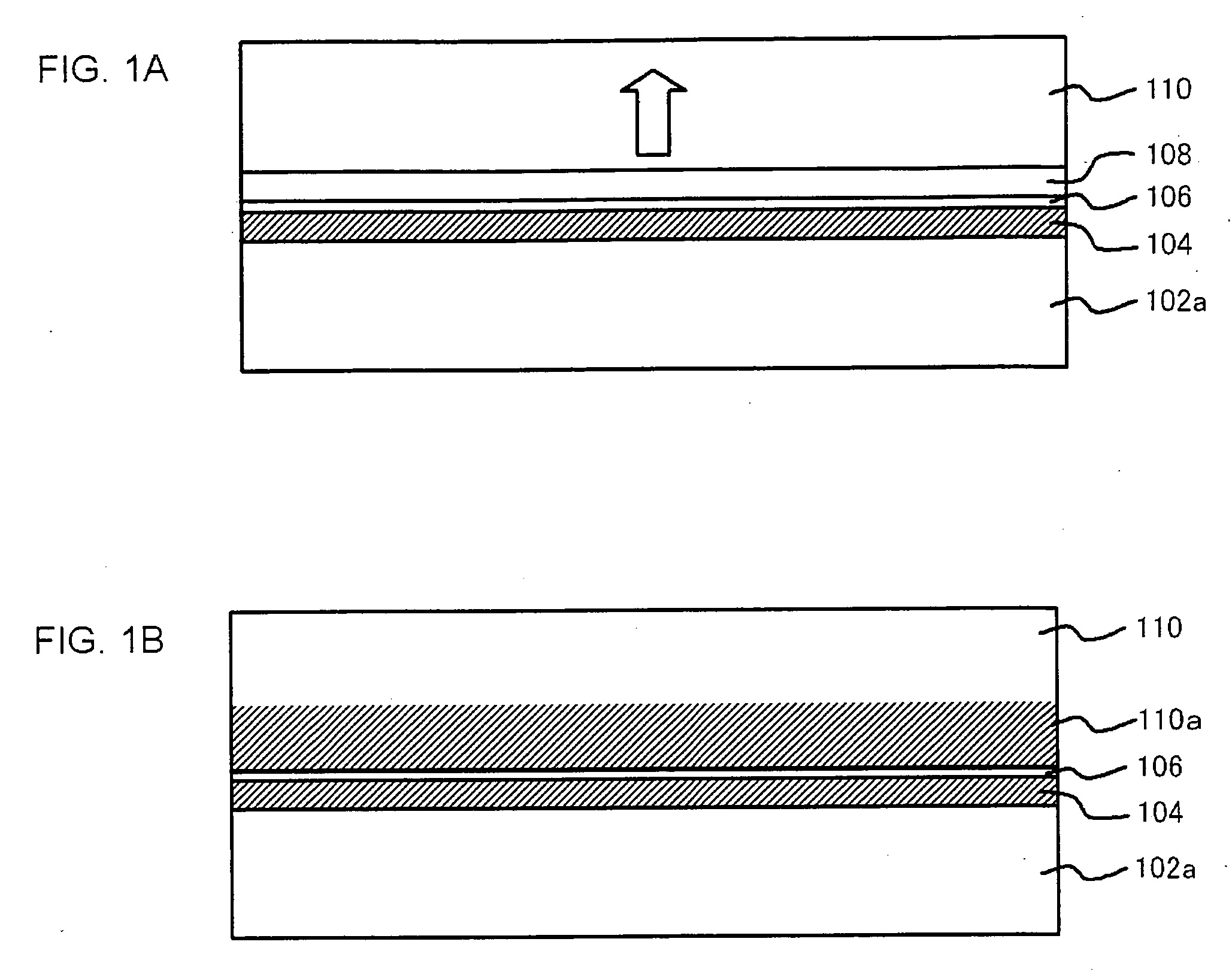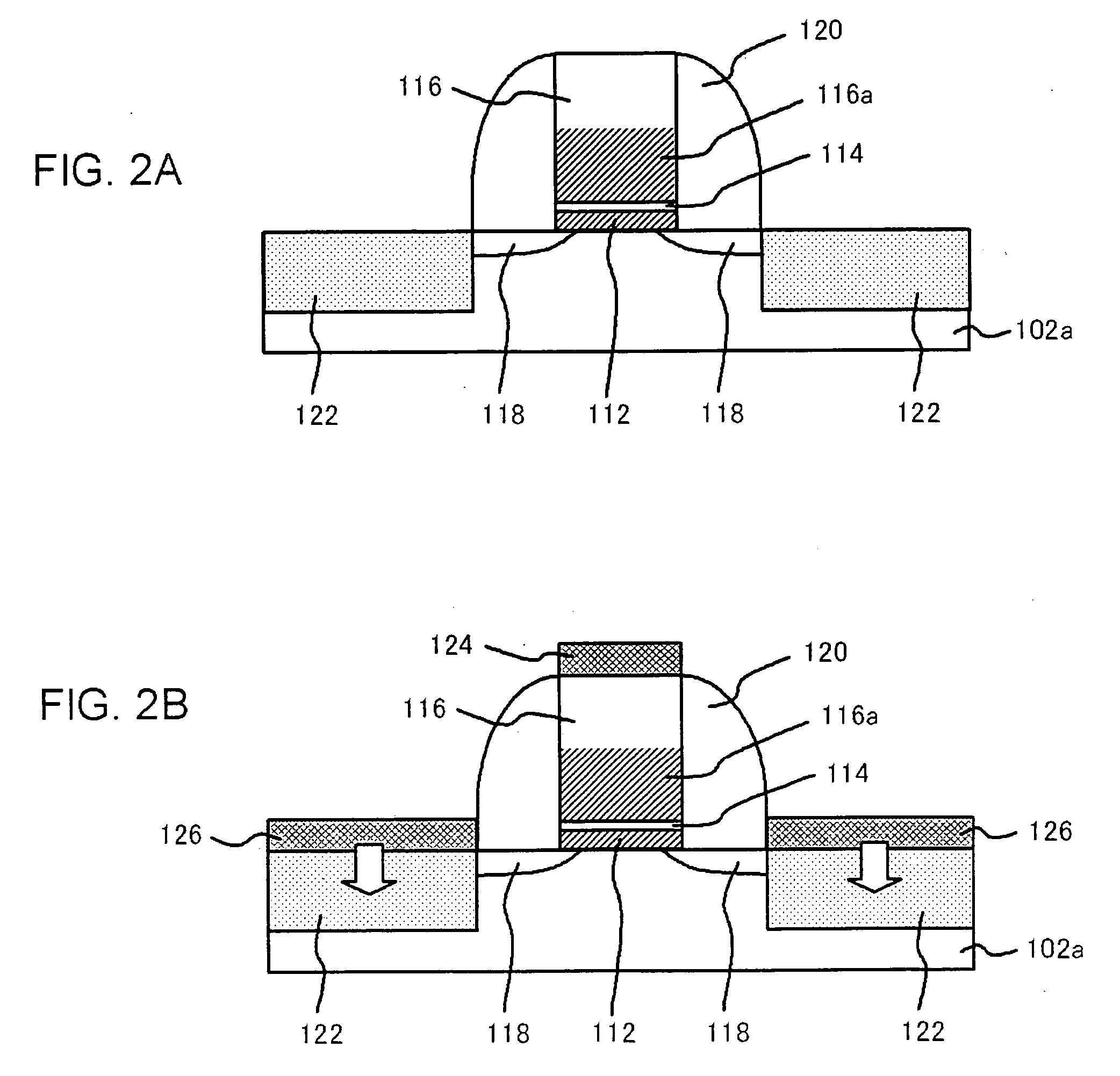Method for manufacturing semiconductor device and semiconductor device
- Summary
- Abstract
- Description
- Claims
- Application Information
AI Technical Summary
Benefits of technology
Problems solved by technology
Method used
Image
Examples
first embodiment
[0033] In first embodiment, a case of forming an n-type metal oxide semiconductor field effect transistor (MOSFET) will be described.
[0034] First of all, as shown in FIG. 1A, a gate insulating film 104, a barrier film 106, a the first metallic film 108 and a polycrystalline silicon film 110 are sequentially deposited on a p-type semiconductor substrate 102a.
[0035] The gate insulating film 104 may be composed of a high dielectric constant film containing one or more metallic element(s) selected from a group consisting of Hf, Zr, Al, La and Ta. More specifically, typical high dielectric constant films may include hafnium oxide (HfO2) film, zirconium oxide (ZrO2) film, aluminum oxide (Al2O3) film, lanthanum oxide (LaO2) film, tantalum oxide (Ta2O5) films or the like. The gate insulating film 104 may be formed by conducting about 20 cycles of a deposition process via, for example, an atomic layer deposition (ALD) process. The thickness of the gate insulating film 104 may be about 3 nm...
second embodiment
[0049] In the second embodiment, a formation of an n-type MOSFET and a p-type MOSFET, which are arranged to be adjacent, will be illustrated. In the following discussions, an n-type MOSFET forming region includes both a region where an n-type MOSFET is to be formed and a region where an n-type MOSFET has been formed. Further, a p-type MOSFET forming region includes both a region where a p-type MOSFET is to be formed and a region where a p-type MOSFET has been formed.
[0050] First of all, a semiconductor substrate 102 is prepared, in which a p-type semiconductor substrate 102a is isolated from an n-type semiconductor substrate 102b by an element isolation film 130.
[0051] In an n-type MOSFET forming region, a gate electrode having a gate insulating film 112, a barrier film 114 and a polycrystalline silicon film 116 having a first silicide layer 116a in the lower portion are deposited on the p-type semiconductor substrate 102a, is formed via a process similar as the process employed i...
example 1
[0067] A semiconductor device was manufactured by a method similar as employed in first embodiment (FIG. 1 to FIG. 3). Manufacture conditions and configuration of a semiconductor device are described below: [0068] gate insulating film 104: HfO2 film, film thickness of 4 nm (deposited by 20 cycle of ALD processes); [0069] barrier film 106: TiN film, film thickness of 1 nm (deposited by 5 cycle of ALD processes); [0070] first metallic film 108: Ni film (deposited by sputter process); [0071] polycrystalline silicon film 110: deposited by CVD process; [0072] second metallic films 124 and 126: W film (deposited by sputter process); [0073] condition for forming the first silicide layer 110a: annealing at around 500 degree C. for 5 minutes; and [0074] condition for forming the second silicide layer 116b: annealing at around 650 degree C. for 5 minutes.
PUM
 Login to View More
Login to View More Abstract
Description
Claims
Application Information
 Login to View More
Login to View More - R&D
- Intellectual Property
- Life Sciences
- Materials
- Tech Scout
- Unparalleled Data Quality
- Higher Quality Content
- 60% Fewer Hallucinations
Browse by: Latest US Patents, China's latest patents, Technical Efficacy Thesaurus, Application Domain, Technology Topic, Popular Technical Reports.
© 2025 PatSnap. All rights reserved.Legal|Privacy policy|Modern Slavery Act Transparency Statement|Sitemap|About US| Contact US: help@patsnap.com



